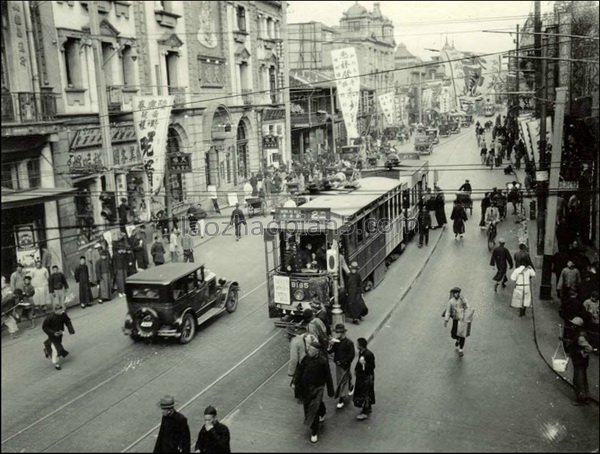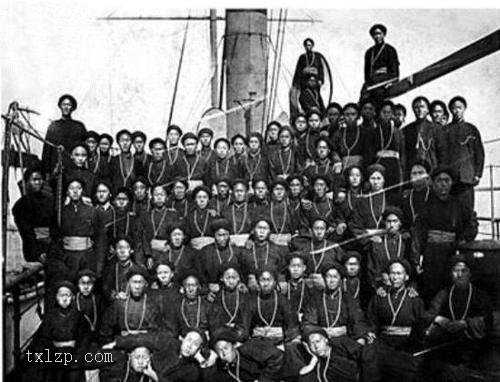On December 4, 1939, Wu Peifu asked a Japanese dentist to see him because of his recurrent dental disease and high fever, but he died suddenly. The most reliable explanation of the cause of death is that of Japanese dentist Ishida. However, in order to pretend that Prime Minister Nobuyasu Abe of Japan, Army General Saito Shouzao, Army Lieutenant General Hirakawa and Tada troops still sent wreaths to Wu Peifu’s mourning hall
After Wu Peifu died, the funeral was held on January 5 in a grand scale& nbsp; The Wu family originally planned to move their spirits to the Changchun Temple on the Xiaxie Street outside Xuanwu Gate after 14 days of resting at home. Later, someone proposed to build one in the Nianhua Temple where Wu Peifu converted to Buddhism; Wu Sheng Shrine”, We can stay here for a while. As for carrying the coffin back home and burying the ancestral tombs, we will discuss it later
On January 24, 1940, Wu Peifu’s funeral was carried out by Dongsi Yongsheng barbershop. His deacons, Songhuo, Zhihuo, loudspeakers, and monk roads ran for several miles, circling most of the main busy streets in Beijing. Wu Peifu’s coffin left the hall at 10:00 a.m., and rose to 64 people’s bars after going up to 32 people’s bars and leaving the east entrance of the Shijin Garden. The funeral procession goes through Dongsi, Dengshikou, Wangfujing, East Chang’an Street, Tian’anmen, West Chang’an Street, Xidan North Street, Gangwa City, and Xisi South Street, to the east, through Ximenwai Street, Ximennei Street, Wenjin Street, across Beihai Yuhe Bridge, through Beihai Qianmen, into Jingshan West Street, through Di’anmen Inner Street, Di’anmen Outer Street, Gulou West Street, and Old Gulou Street, into Dashiqiao Hutong, and it is 5:30 p.m. at Nianhua Temple
It is reported that there were 11 roadside sacrificial sheds along the way at that time; There are countless sacrificial tables and tea tables. Almost all residents automatically went to the streets to watch the ceremony, forming a trend of empty alleys. Some even came from Tianjin, Baoding, Shijiazhuang and the four townships and eight towns in the suburbs of Beijing to see the excitement. The streets where the funeral home passed, the teahouses, restaurants on both sides, and the seats facing the windows upstairs and downstairs were all covered with heavy money in advance by customers. At that time, customers would eat and watch this once-in-a-lifetime funeral
Please read the photos taken at that time
![图片[1]-1940 Old Photo of Beijing Wu Peifu Moving to Nianhua Temple-China Archive](https://chinaarchive.net/photo/republic-of-china/1-21111H33054.jpg)
![图片[2]-1940 Old Photo of Beijing Wu Peifu Moving to Nianhua Temple-China Archive](https://chinaarchive.net/photo/republic-of-china/1-21111H33055.jpg)
![图片[3]-1940 Old Photo of Beijing Wu Peifu Moving to Nianhua Temple-China Archive](https://chinaarchive.net/photo/republic-of-china/1-21111H33055-50.jpg)
![图片[4]-1940 Old Photo of Beijing Wu Peifu Moving to Nianhua Temple-China Archive](https://chinaarchive.net/photo/republic-of-china/1-21111H33056.jpg)
![图片[5]-1940 Old Photo of Beijing Wu Peifu Moving to Nianhua Temple-China Archive](https://chinaarchive.net/photo/republic-of-china/1-21111H33056-50.jpg)
![图片[6]-1940 Old Photo of Beijing Wu Peifu Moving to Nianhua Temple-China Archive](https://chinaarchive.net/photo/republic-of-china/1-21111H33056-51.jpg)
![图片[7]-1940 Old Photo of Beijing Wu Peifu Moving to Nianhua Temple-China Archive](https://chinaarchive.net/photo/republic-of-china/1-21111H33056-52.jpg)
![图片[8]-1940 Old Photo of Beijing Wu Peifu Moving to Nianhua Temple-China Archive](https://chinaarchive.net/photo/republic-of-china/1-21111H33057.jpg)



![[Qing Dynasty] British female painter—Elizabeth Keith, using woodblock prints to record China from the late Qing Dynasty to the early Republic of China—1915-China Archive](https://chinaarchive.net/wp-content/uploads/2022/11/image-191x300.png)

